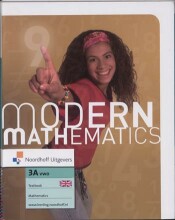Summary: Digestion
- This + 400k other summaries
- A unique study and practice tool
- Never study anything twice again
- Get the grades you hope for
- 100% sure, 100% understanding
Read the summary and the most important questions on Digestion
-
1 The breakdown of food
This is a preview. There are 1 more flashcards available for chapter 1
Show more cards here -
which two major processes in the breakdown of food happen?
the physical breakdown and the chemical breakdown -
1.1 The physical breakdown of food
-
Which four kind of teeth do you have and what do they do?
- incisors= chisel-shaped, front of the mouth, are for biting into soft foods like fruit
- canines= are pointed, used to eat tougher food but human don't eat a lot so use their canines as extra incisors
- premolars and molars= first premolars, than molars, have raised parts called cusps with grooves between them, form a crushing and grinding surface at the back of the mouth, breaks food into small pieces
-
You have two set of teeth how many teeth do they have and and at what age do you get them?
1th set= 20 teeth called milk teeth, first teeth emerge through the gum at about 6 months the set is complete at the age of 3
2th =, 32 permanent teeth which begins at the age of 6 and is completed at the age of 17 -
2 along the alimentary canal
-
2.1 When your mouth waters
This is a preview. There are 2 more flashcards available for chapter 2.1
Show more cards here -
How much water do you make up and which things produce the saliva?
1.5 liters per 24 hours, Saliva is made by three pairs of salivary glands. -
What does mucin and amylase do?
mucin= coats the food and makes it easier to swallow
amylase= egins the breakdown of starch molecules in the food into sugar molecules -
2.2 When you swallow
-
What happens with the food when you chewed it?
When you have chewed your food it is made into a pellet called the bolus. This is pushed to the back of your mouth by your tongue. -
What is a gullet or oesophagus ?
This is the tube connection the mouth to the stomach -
How does a oesophagus or gullet look like?
Look like:
Outer layer muscle cells are arranged so that they point along the length of the gullet --> form the longitudinal muscle layer
Inner layer the cells are arranged so that they point around the wall of the gullet --> form circular muscle layer -
How does the oesphagus get the bolus down?
circular muscles squeeze on the food--> don't contract all at the same time --> first region at the top squeezes then the region a little bit lower --> circular cells can't lengthen themselves --> longitudinal cells need to contract to stretch the circular muscles once again -
What is the wave of the muscular contraction called?
peristalsis
- Higher grades + faster learning
- Never study anything twice
- 100% sure, 100% understanding





























